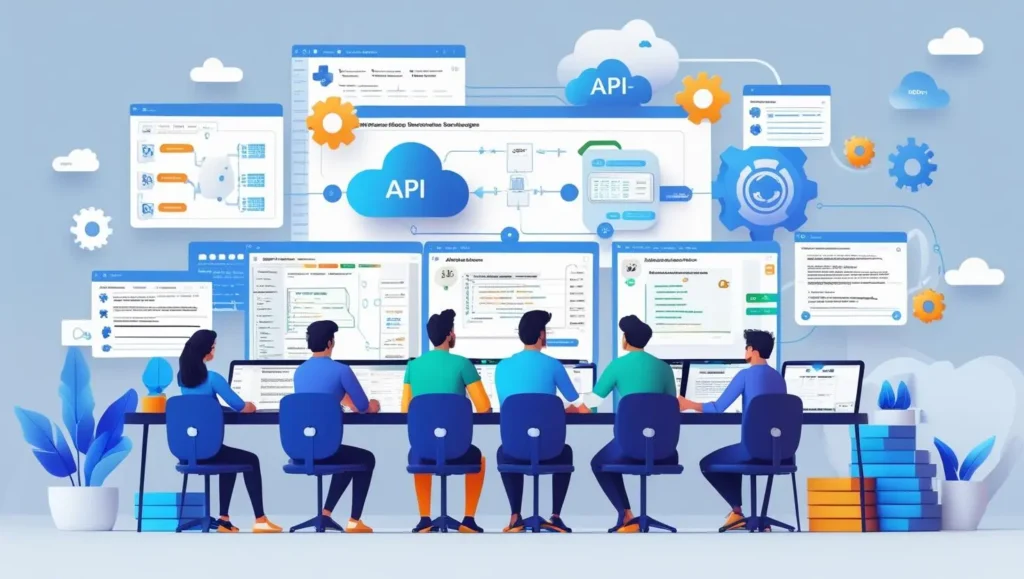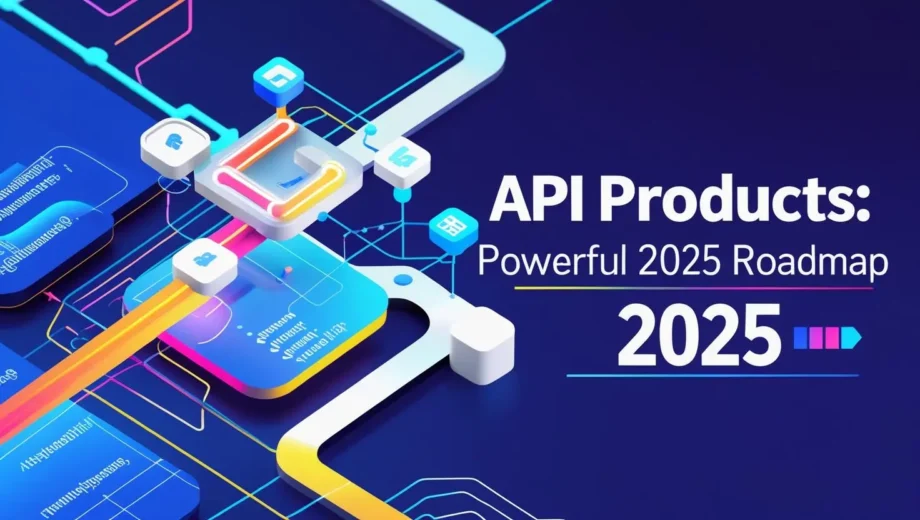Introduction
In the hyper-connected digital landscape of 2025, API Products are no longer hidden behind user interfaces—they are front-line tools driving business growth, product interoperability, and digital transformation. Whether you're a fintech startup, a SaaS company, or a platform provider, adopting an API-first development model is now critical to scaling in a connected ecosystem.
APIs are the universal connectors of the web, and API Products allow developers to build modular, reusable, and scalable software architectures. With integrations becoming central to user experiences, API-first development is transforming the way teams launch products, collaborate across services, and monetize their backend.
This article provides a structured API-first development roadmap for 2025, covering the six key phases of modern API product creation. You'll also explore how major platforms like Postman and Stripe use API-first strategies, global case studies, monetization tactics to buy API access, and tools like Postman Docs to streamline development.
How to go API-first? It starts with a mindset shift: APIs are not side features—they are the API Products that power every interaction, integration, and feature. Going API-first means designing your APIs as the primary product interface before building user-facing features.
Principles of API-First Development

- Design-first philosophy: APIs are defined and documented before implementation using tools like OpenAPI or Postman.
- Contract-first collaboration: Teams agree on API contracts before development to allow parallel front-end/back-end work.
- Developer-first approach: High-quality documentation, SDKs, and onboarding workflows are crucial to API adoption.
Benefits of Going API-First
- Faster iteration cycles
- Improved scalability and modularity
- Enhanced developer experience
- Increased ecosystem opportunities
Tools that empower API-first development include Postman, Swagger, Stoplight, and SDK-generators like OpenAPI Generator—all crucial for building developer-friendly, monetizable API Products.
API-First Development Roadmap 2025
Phase 1: Strategy & Planning
All successful API Products start with a clear strategy.
- Define product goals: What purpose will your API serve?
- Identify users: Will your API serve internal apps, third-party developers, or global partners?
- Map integrations: Consider mobile apps, IoT devices, and cloud platforms.
- Business model: Will you offer free access or sell your API Products via subscriptions or usage-based billing?
Phase 2: API Design & Specification
The core of building great API Products lies in solid design.
- Use RESTful API design: Focus on resources, statelessness, and clean URLs.
- Create OpenAPI specs to define endpoints, responses, and authentication rules.
- Employ Postman Docs to visualize and share interactive documentation.
Good documentation improves developer experience, increases trust, and accelerates API adoption. Include:
- Authentication flows (OAuth2, API key)
- Rate limits
- Use case examples
- Error response guides
Phase 3: SDK Development & Client Libraries
SDKs play a vital role in successful API Products:
- Generate SDKs for popular languages (Python, JavaScript, Go, Swift)
- Use tools like Swagger Codegen or Postman Code Generators
- Ensure SDKs are well-documented and maintained
- Distribute via npm, PyPI, Maven, or GitHub
SDKs drastically reduce the friction of adopting API Products, especially across mobile, web, and backend platforms.
Phase 4: API Security & Rate Limiting
Security is critical to scaling API Products in 2025.
- Use OAuth 2.0, JWT, or API keys
- Apply rate limiting to prevent abuse
- Ensure HTTPS encryption, CORS headers, and CSRF protection
- Consider compliance frameworks (SOC 2, GDPR, HIPAA) for B2B and enterprise clients
By prioritizing security, you ensure the longevity and credibility of your API Products.
Phase 5: Testing & Continuous Integration
No API product is complete without automated testing and CI/CD:
- Use Newman (Postman CLI), Rest Assured, or Insomnia for API tests
- Integrate tests with GitHub Actions, Jenkins, or GitLab
- Implement mock servers for staging environments
- Set up API monitoring tools like Runscope or Postman Monitors
This ensures every new version of your API Products is reliable and bug-free.
Phase 6: Launch & Developer Support
Launch your API Products with clarity and community focus:
- Create a developer portal with documentation, SDKs, pricing, and onboarding steps
- Offer sandbox environments and sample apps
- Set up support forums, ticketing systems, or real-time chat (Slack/Discord)
- Enable usage analytics so developers can monitor performance
Providing excellent support drives long-term adoption and advocacy of your API Products.
Buy API Access: Business Models & Market
In 2025, more organizations are productizing their APIs. Let’s look at how to buy API access or sell it as a product.
Who Should Sell API Products?
- SaaS companies offering CRM, ERP, analytics, or communication platforms
- Cloud providers offering compute, storage, or AI services
- E-commerce platforms for payments, shipping, and recommendations
Business Models
- Freemium: Free tier with premium upgrades
- Tiered pricing: Based on usage, endpoints, or API features
- Pay-per-use: Best for data-intensive or real-time applications
- Custom enterprise plans: Includes SLAs, dedicated support, and security reviews
Security, uptime, and documentation must be prioritized before you sell your API Products.
Spotlight on Postman Docs
Postman Docs has become essential for companies building reliable API Products. With 25M+ users, Postman offers:
- Live documentation with “Try It” features
- Markdown and auto-generated code snippets
- GitHub-style version control for APIs
- Team collaboration and access control
In 2025, Postman Docs integrates AI-assisted testing and changelog generators to help developers document smarter, not harder.
👉 Postman Docs – external link
Branded Case Study: Postman & Stripe
Postman
- Used by 98% of Fortune 500 companies
- Supports mock servers, test automation, and API governance
- Facilitates global API-first workflows
Stripe
- Generates 90%+ of its revenue via API Products
- Offers developer-first payment APIs with outstanding documentation
- SDKs available in 8+ languages
- Powers platforms like Shopify, Lyft, and Notion
These companies show how API-first thinking leads to global-scale adoption and monetization.
Global API-First Product Case Studies
Leading organizations worldwide are going API-first:
- Twilio (USA): Voice, SMS, and video APIs
- Shopify (Canada): APIs for checkout, plugins, and admin tools
- Kakao (South Korea): APIs for messaging, payments, and maps
- Gojek (Indonesia): APIs for food delivery, transport, and wallet
These global API Products unlock new markets and partner ecosystems.
Challenges and Future Projections
Challenges
- Versioning complexity across multiple client integrations
- Security risks with poorly designed APIs
- Documentation lag when APIs evolve rapidly
Future Trends
- GraphQL APIs for custom data fetching
- AI-powered API testing & monitoring
- Event-driven APIs using WebSockets and Kafka
Staying ahead of these trends ensures your API Products stay relevant and secure.
Conclusion
The rise of API Products in 2025 signals a new era of digital innovation. By adopting a structured API-first development roadmap, teams can build scalable, developer-friendly products that are easy to integrate, monetize, and evolve.
Whether you're a startup or an enterprise, treating your APIs as first-class products unlocks long-term success and global reach.
✅ Now’s the time to invest in API-first thinking—and build products that power the future.









